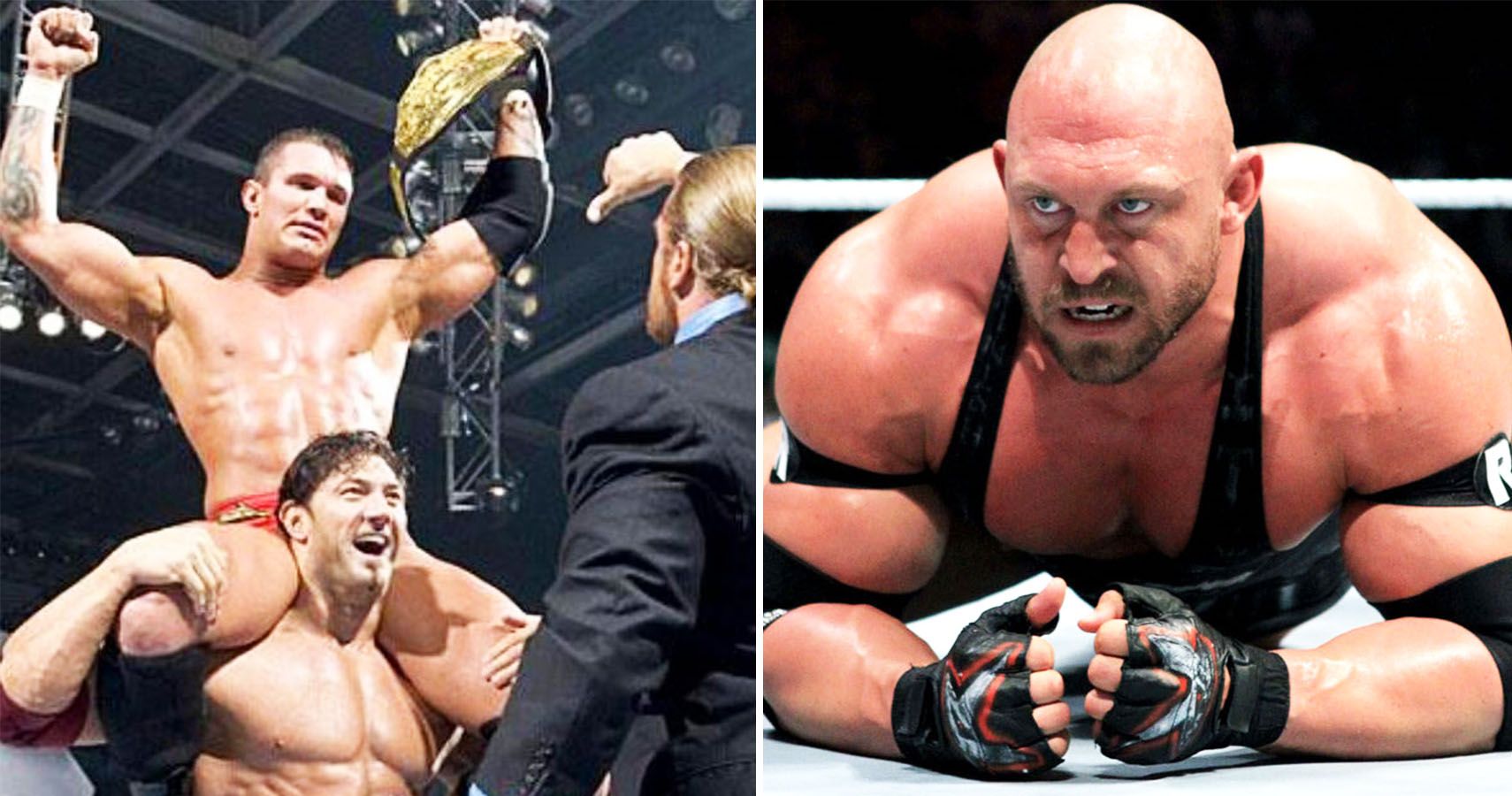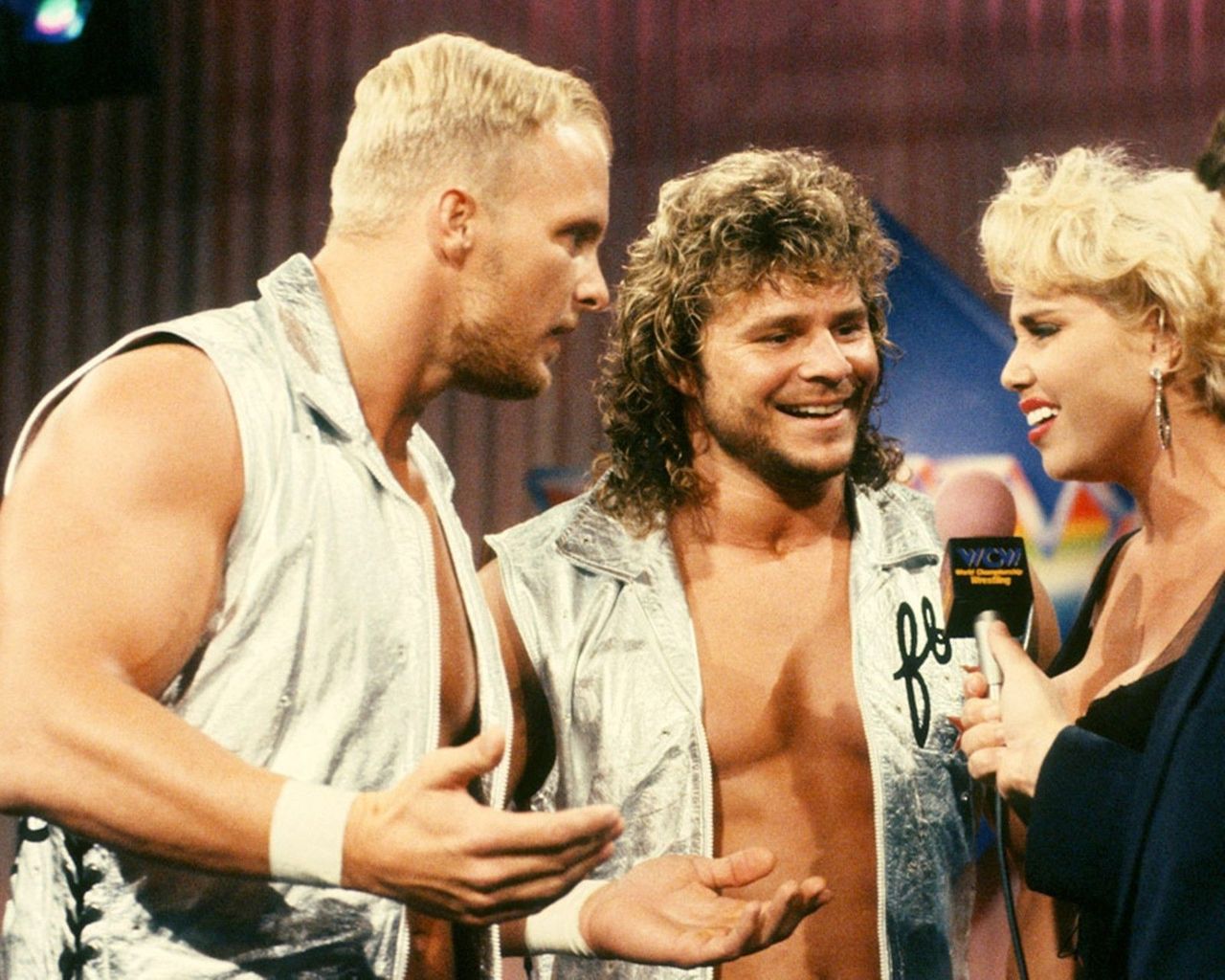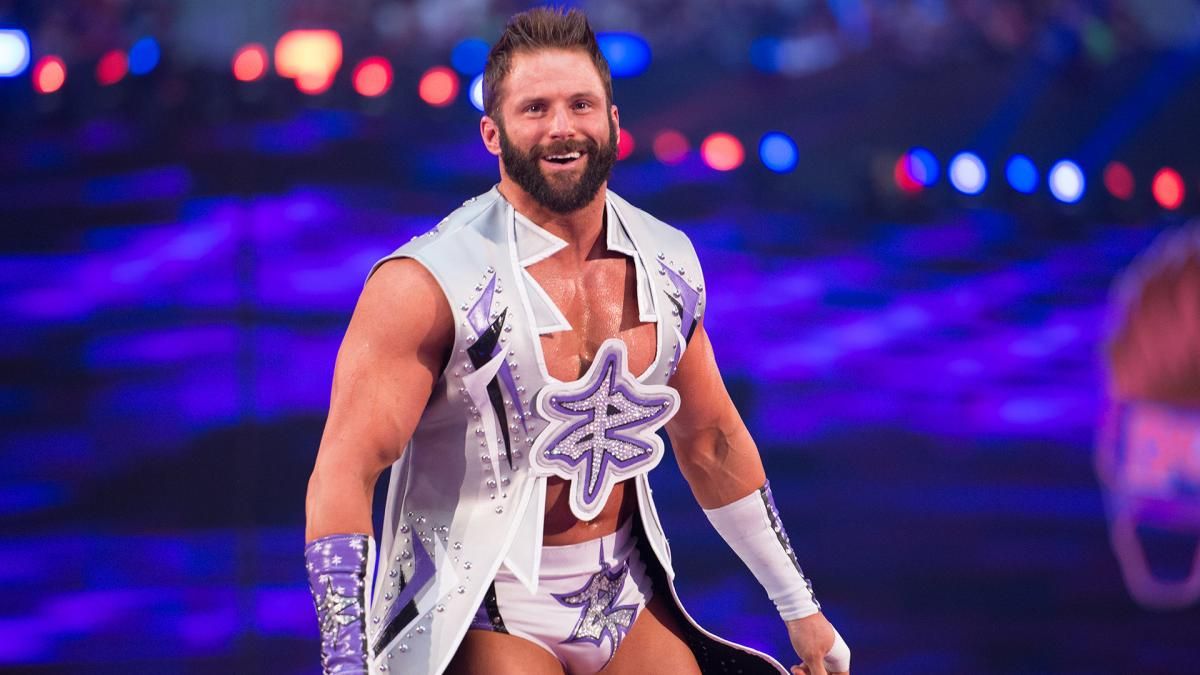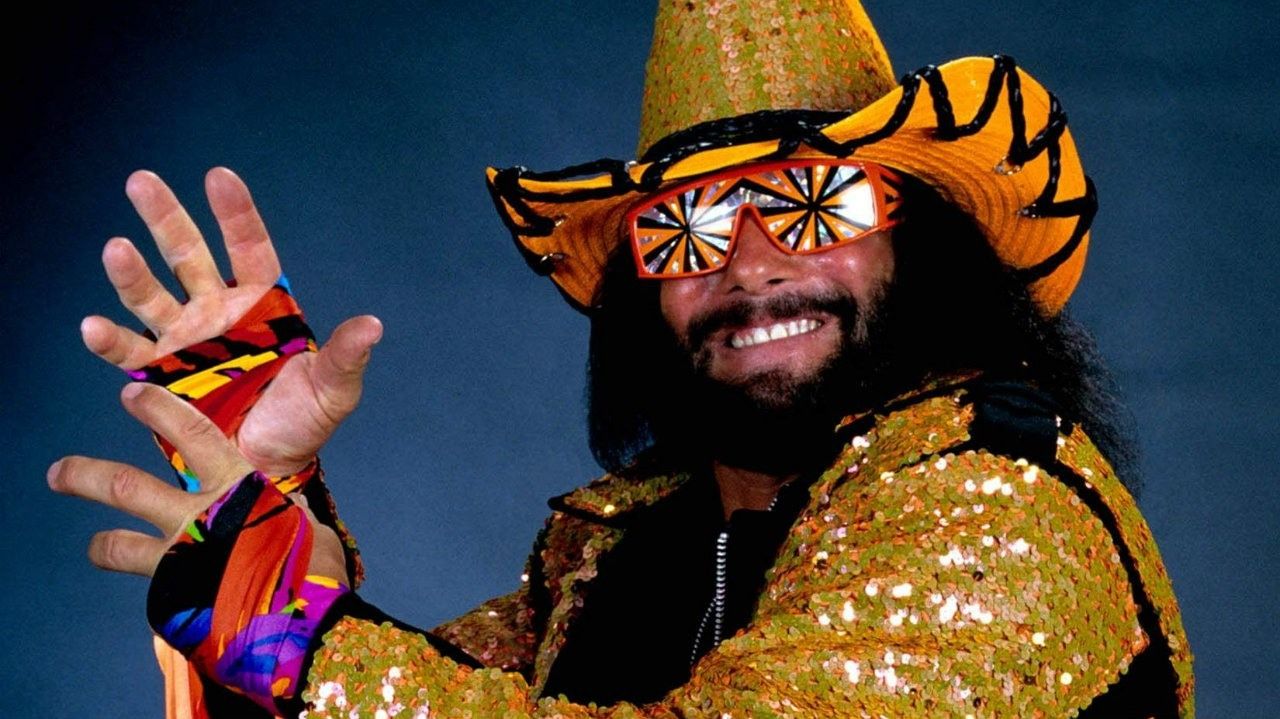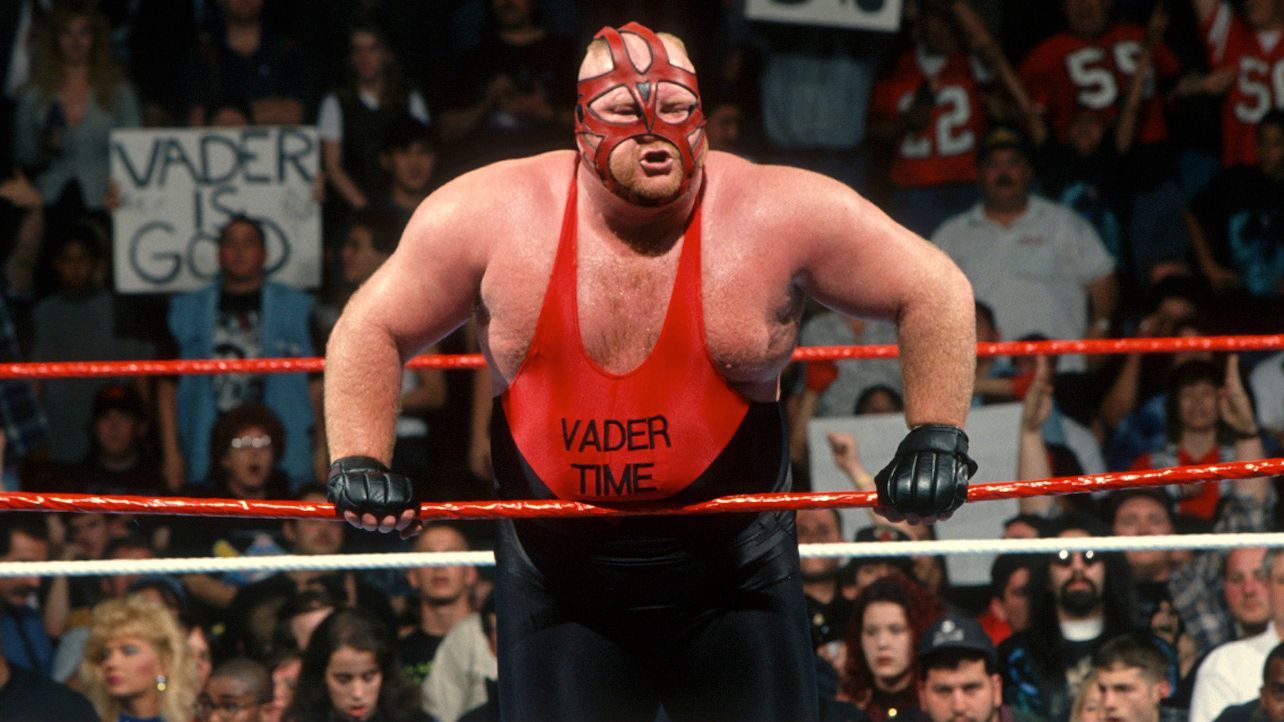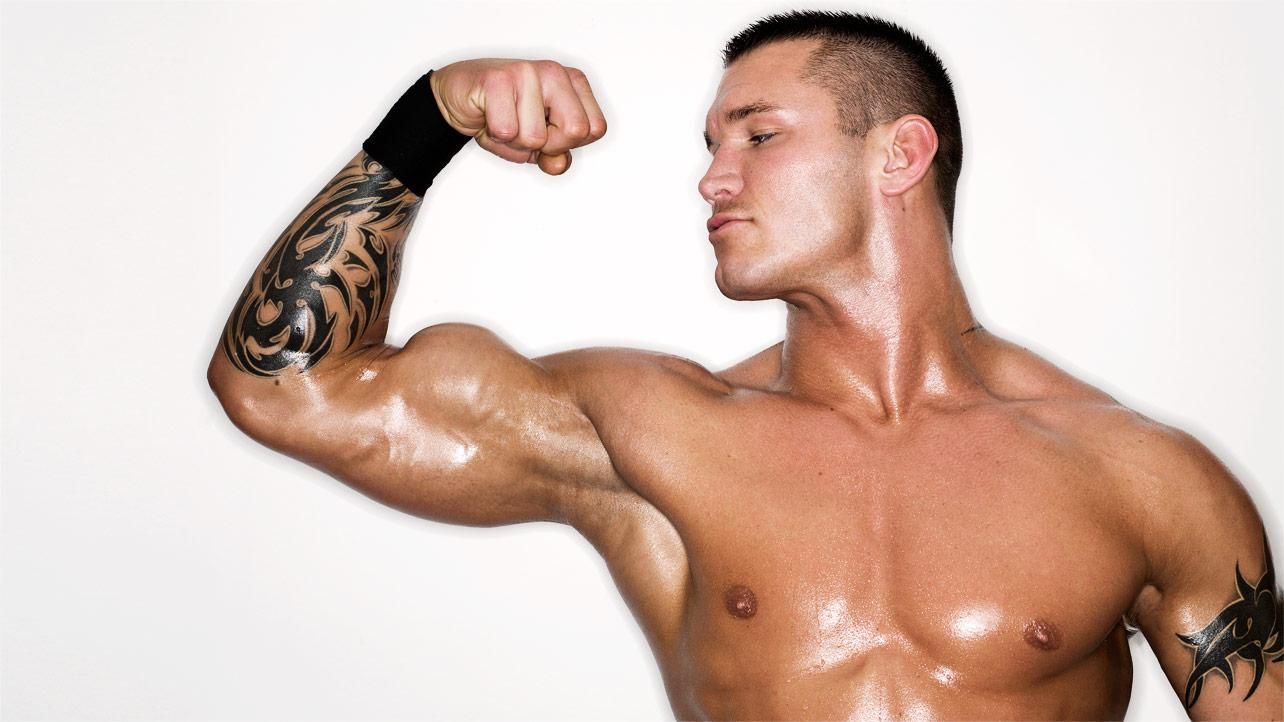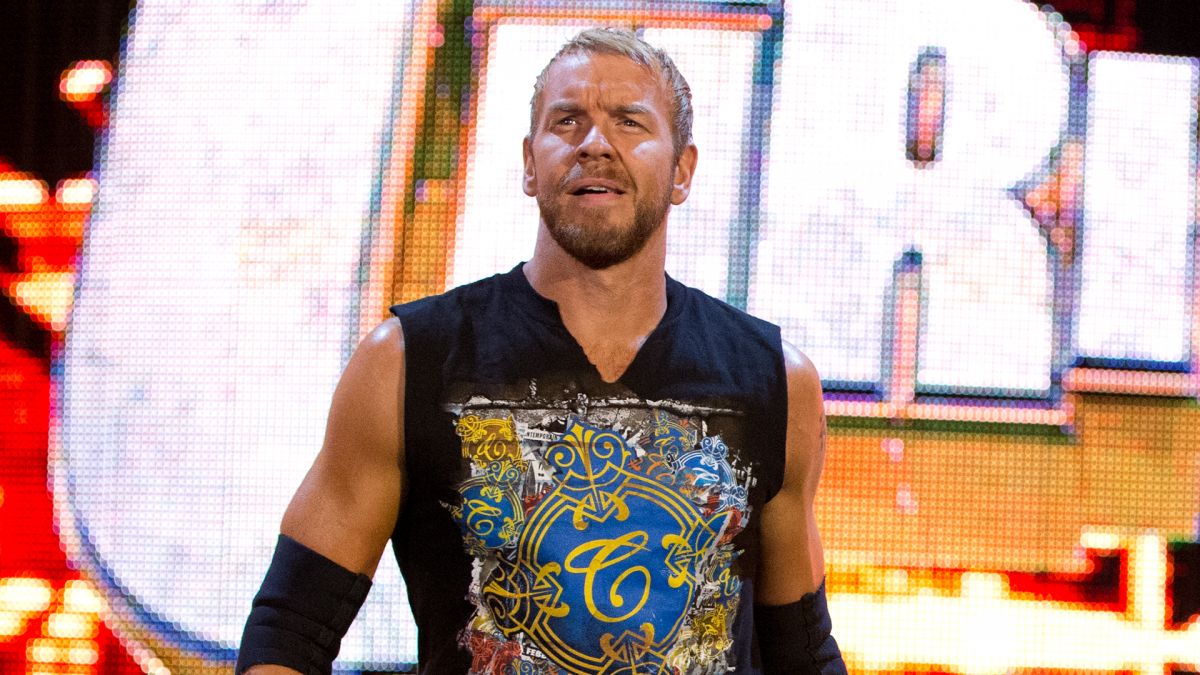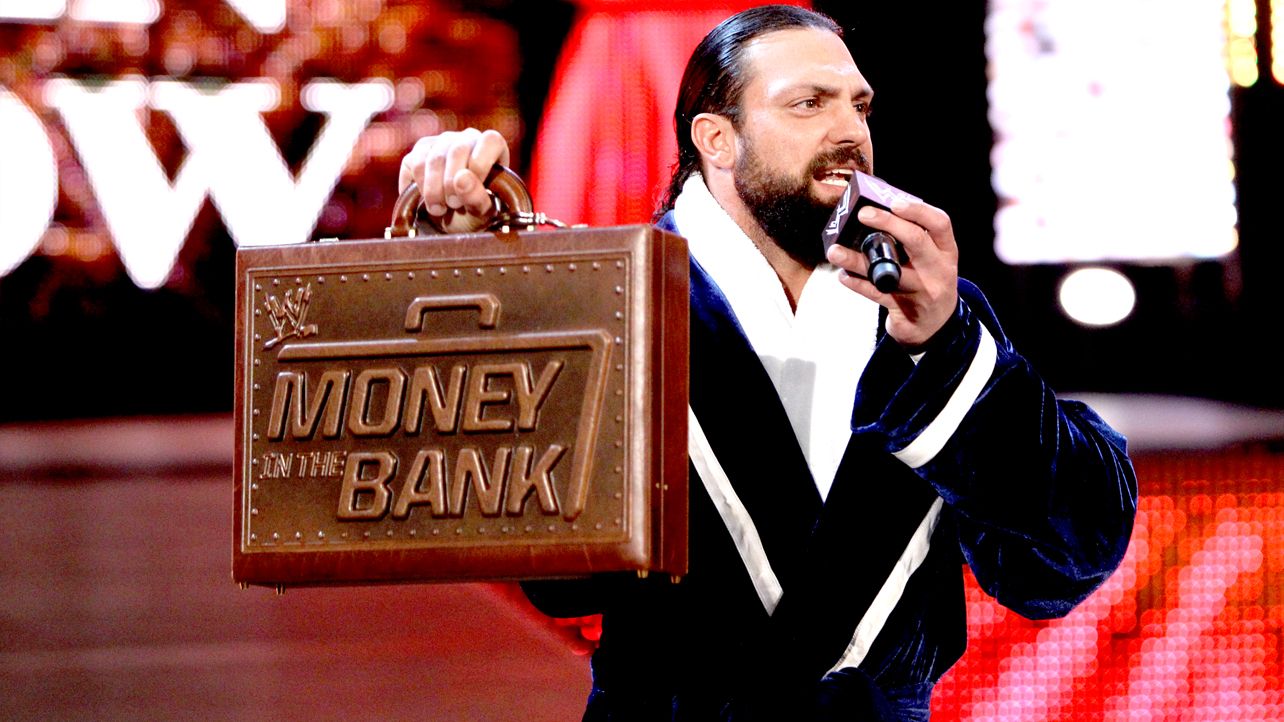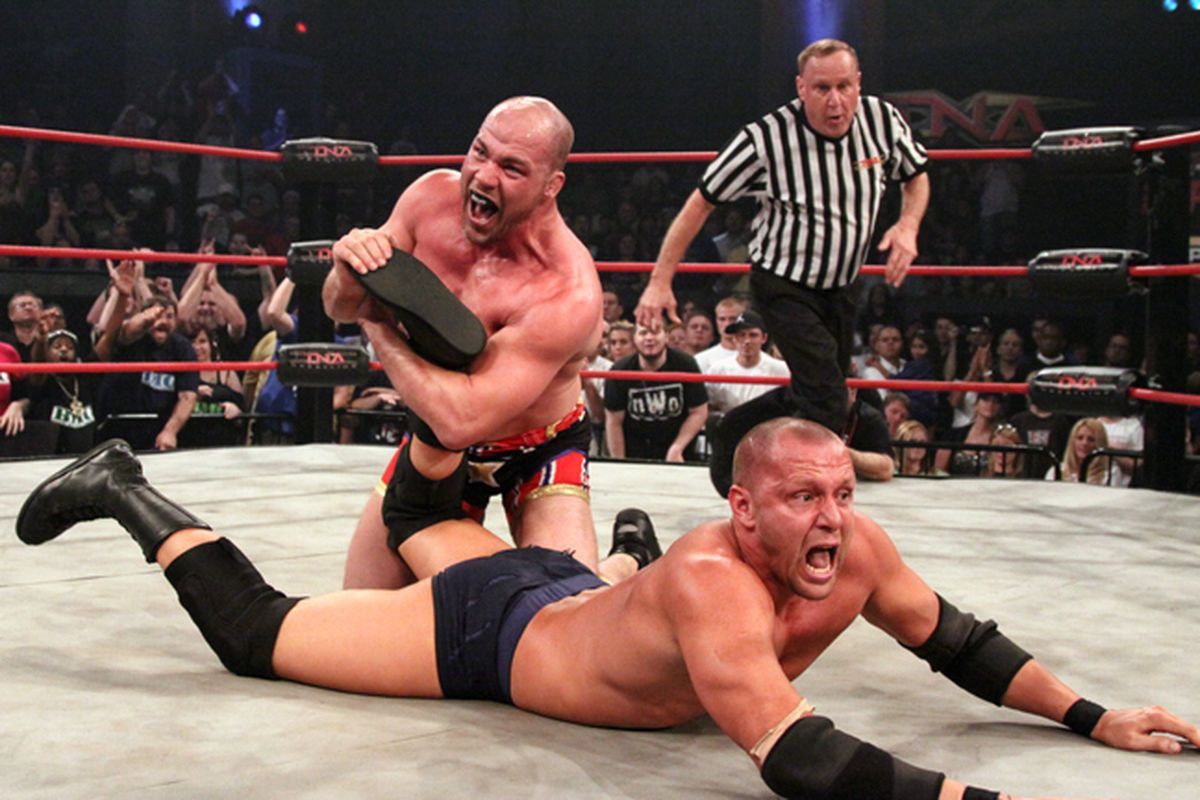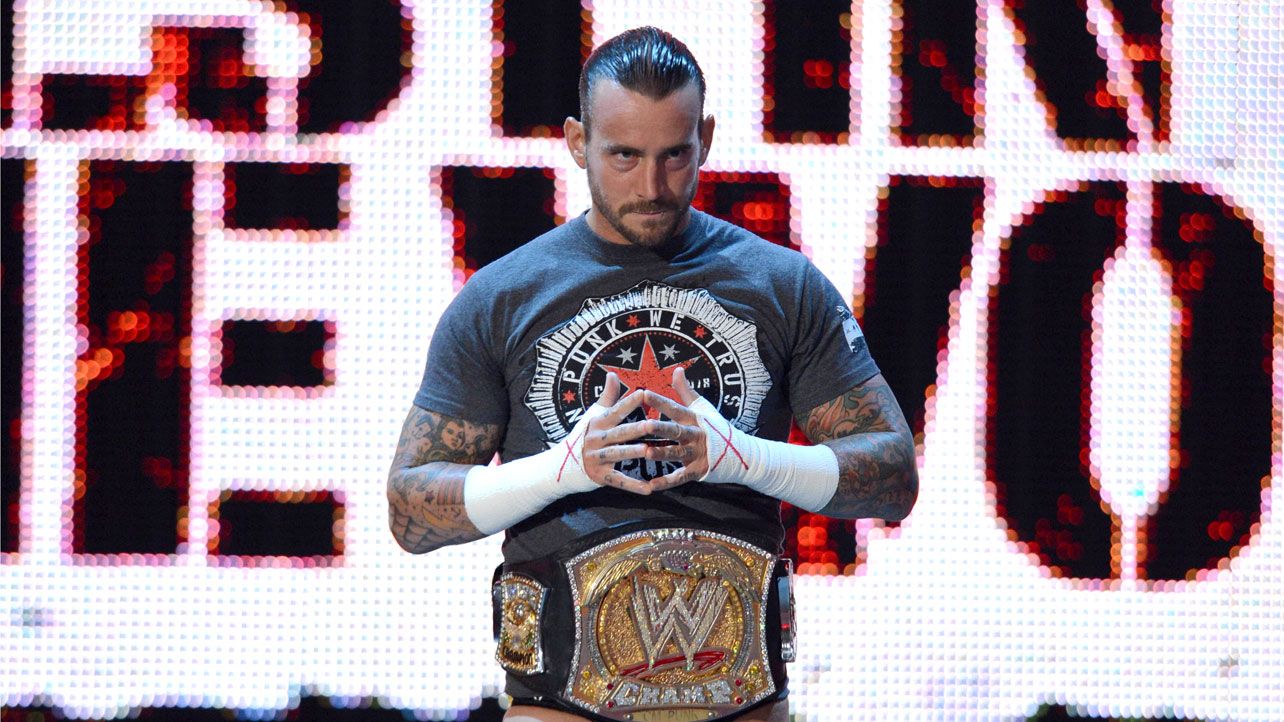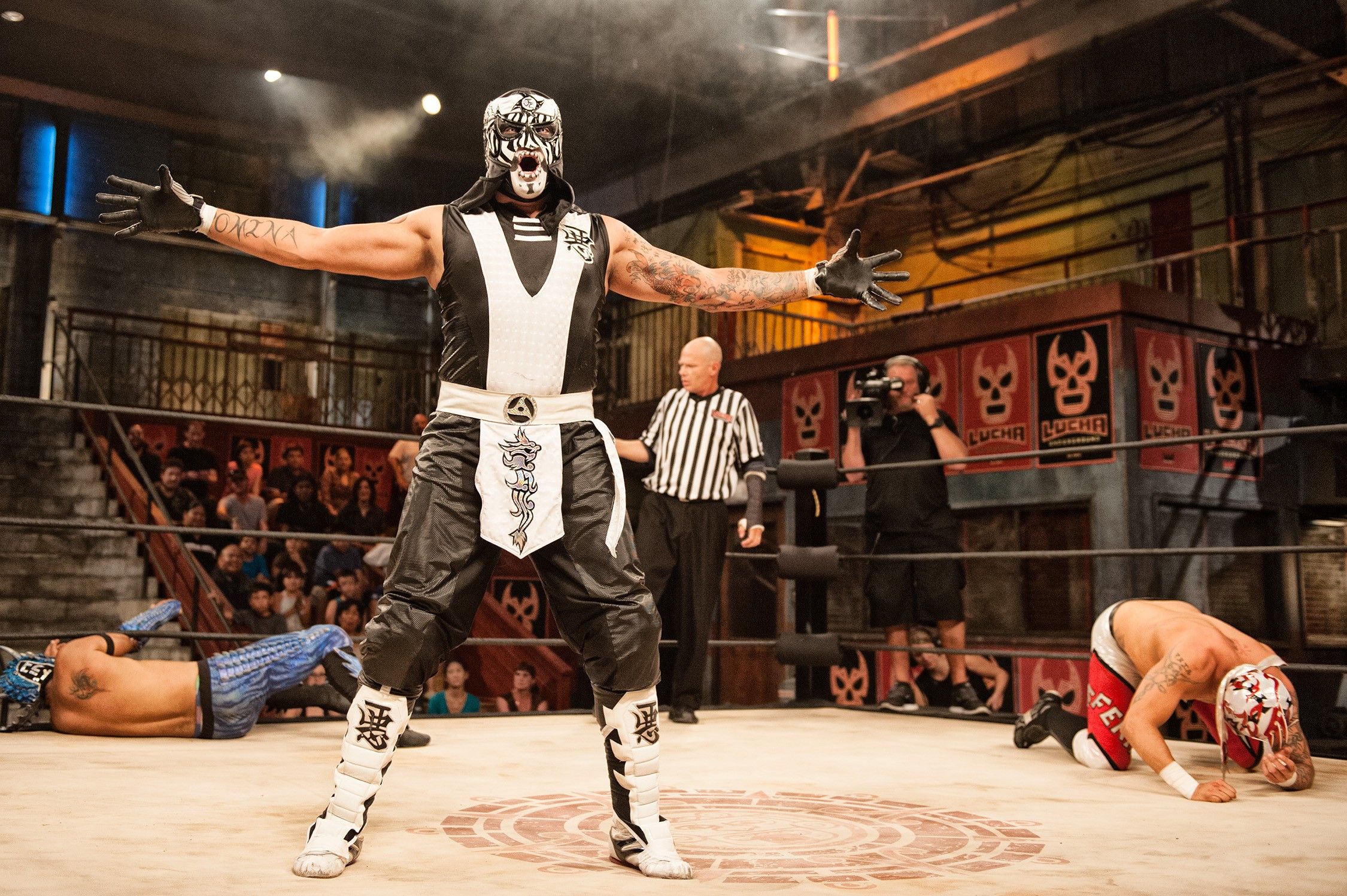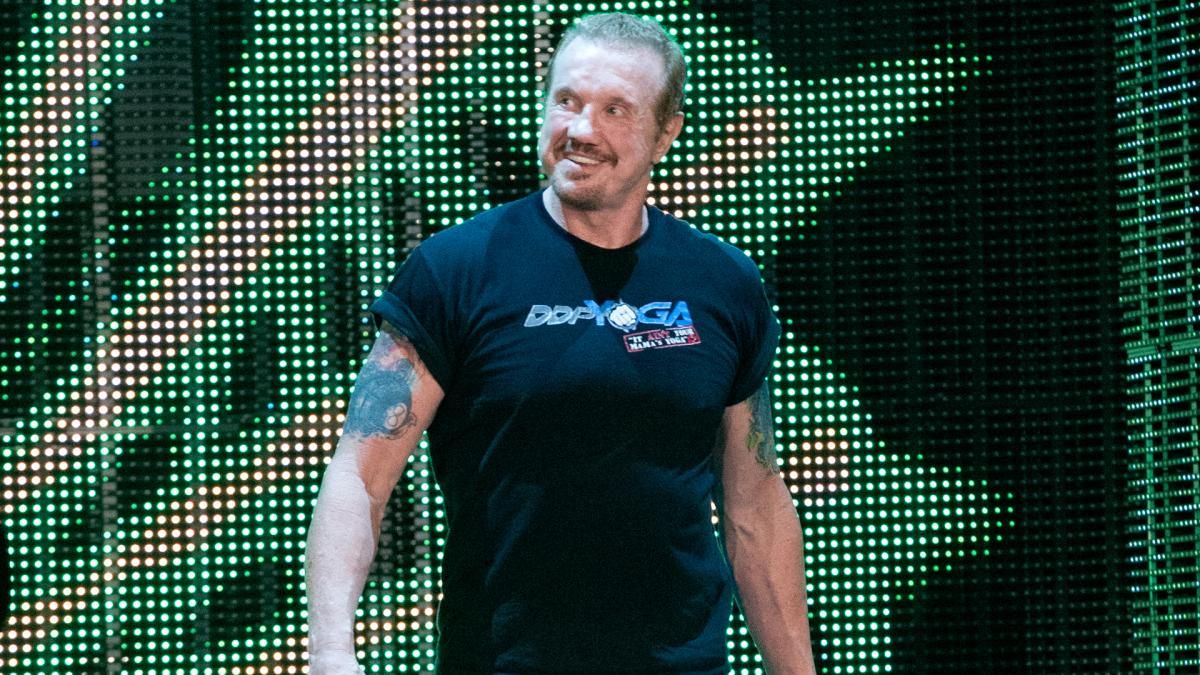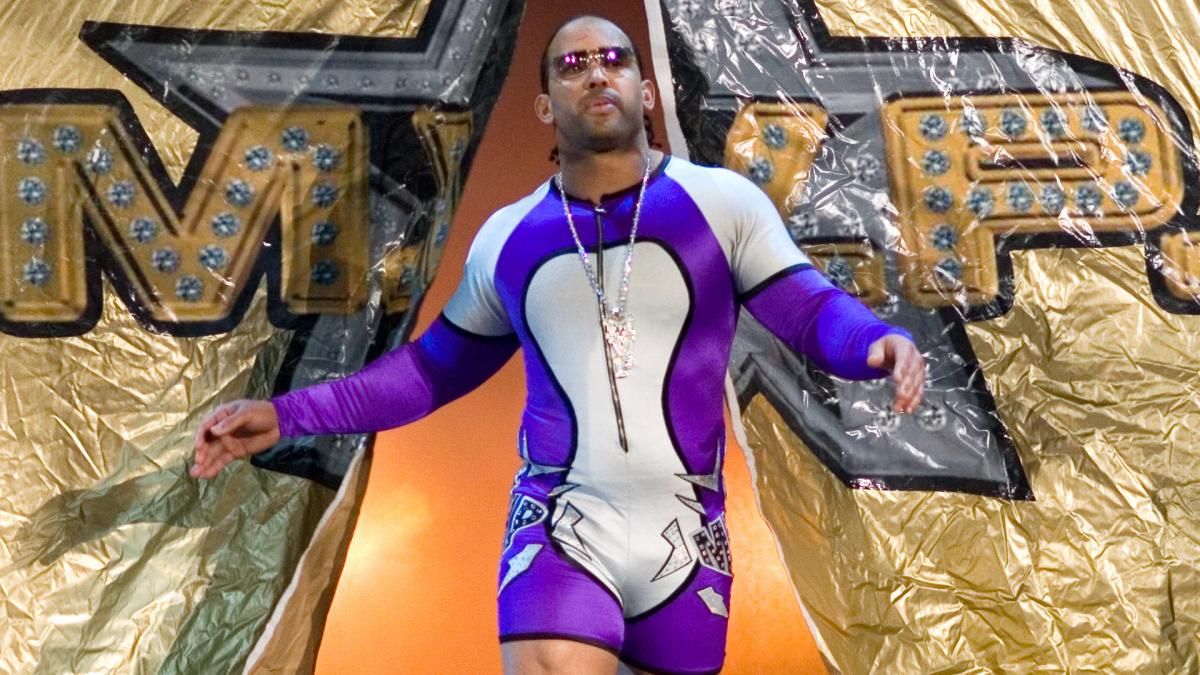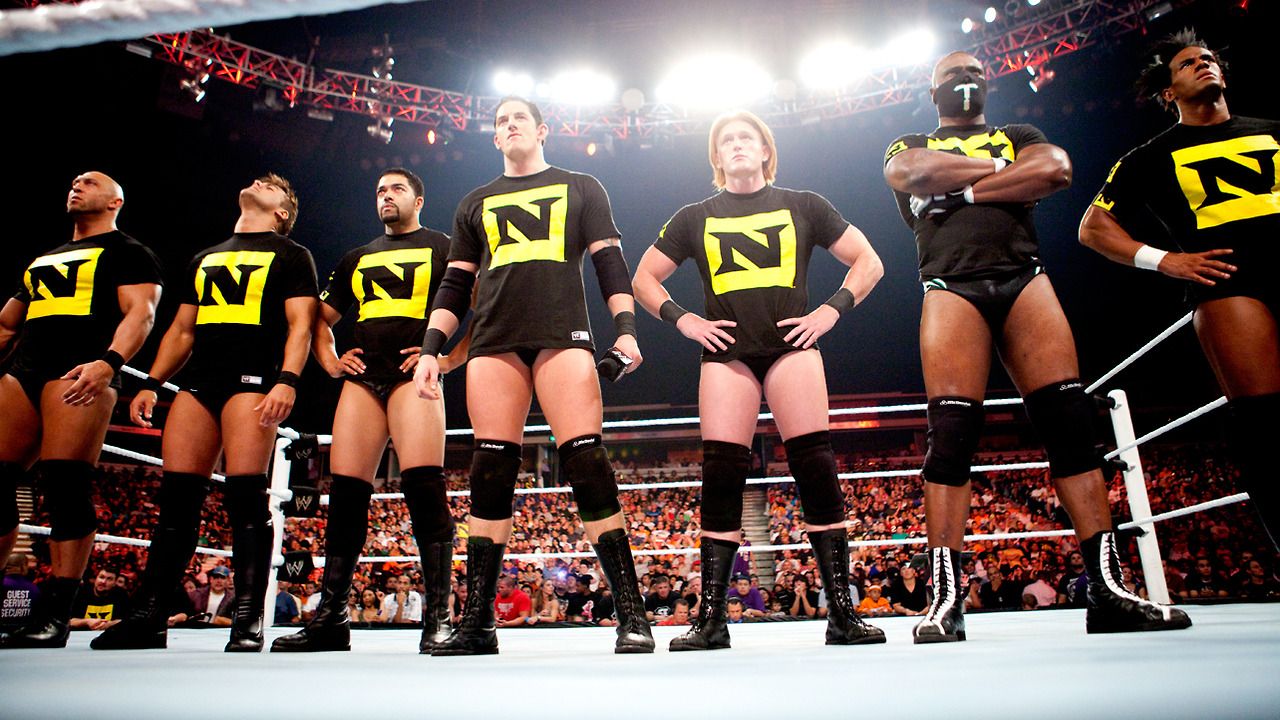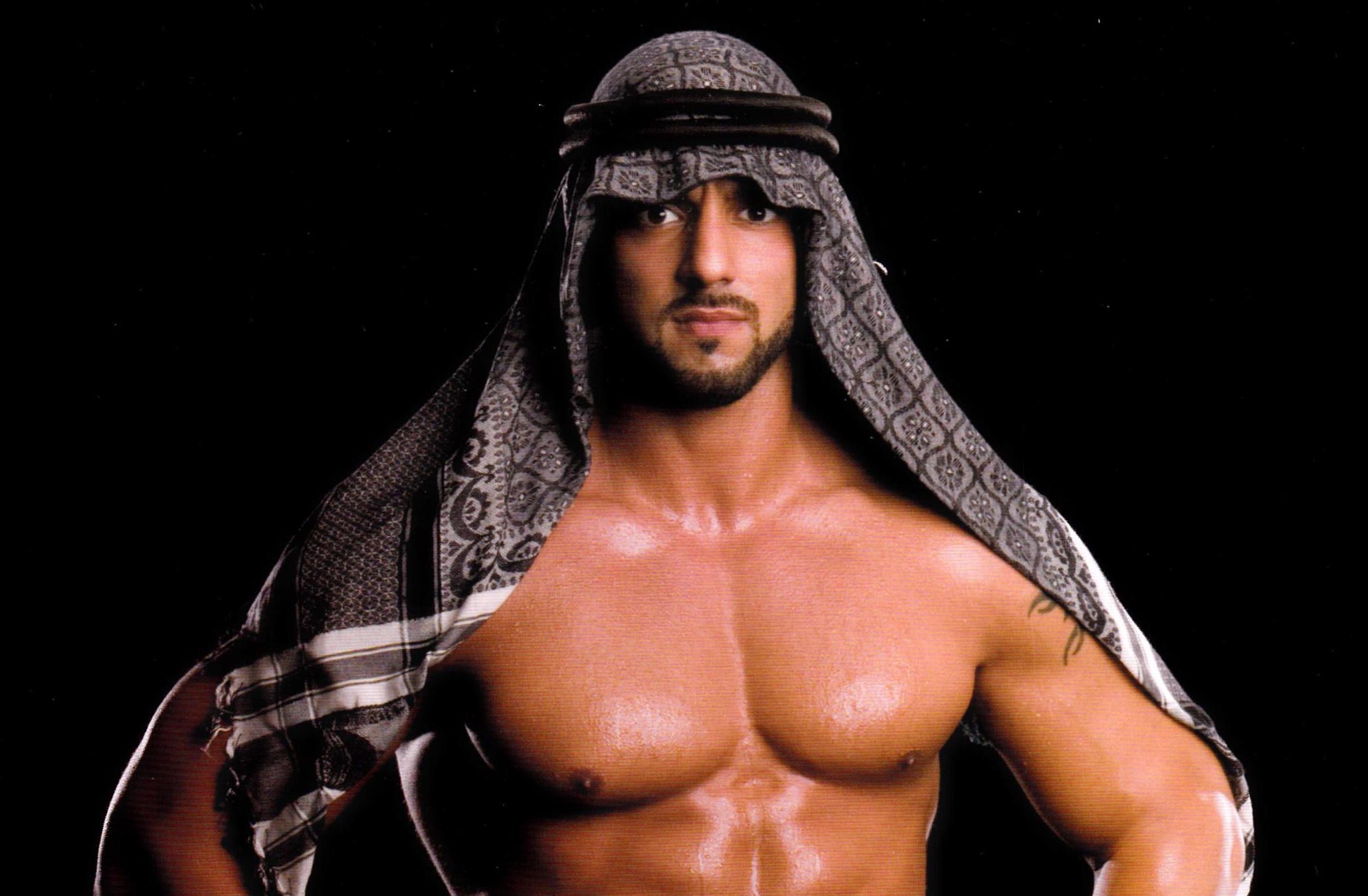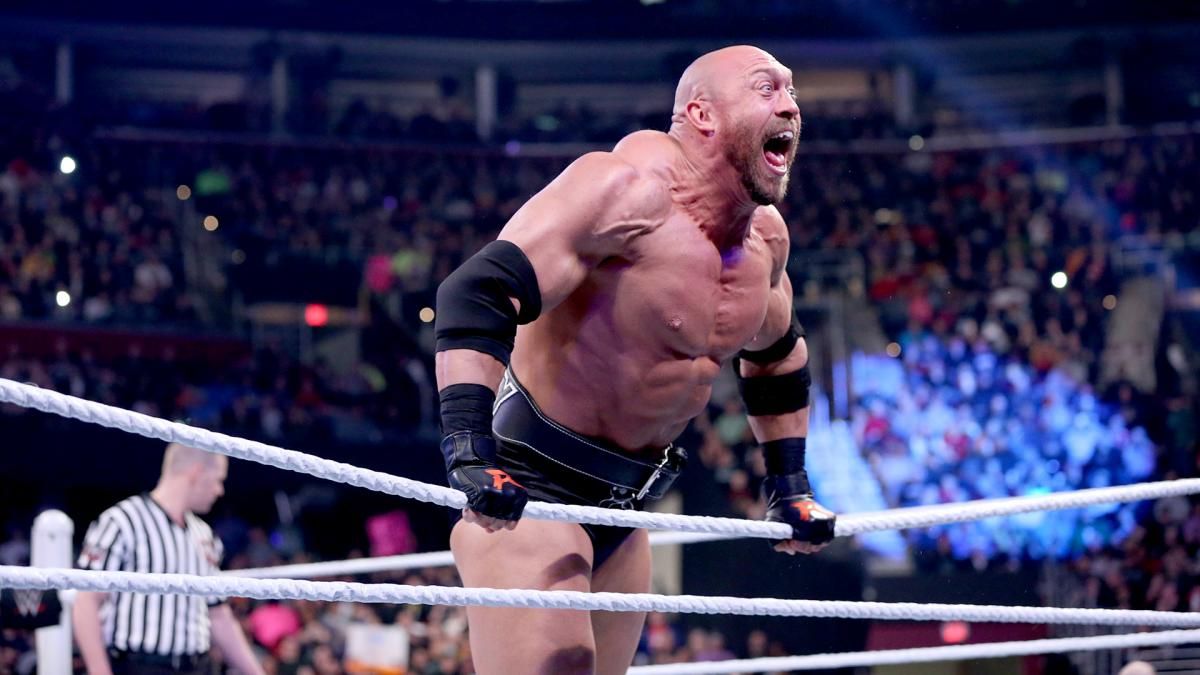The professional wrestling business can be very strange in terms of its decision-making processes. There are those times when an act catches fire in the eyes of the fans—when a face becomes wildly popular, or when a heel grows compelling enough to lure fans in and really engage them. Consider two different stages of Hulk Hogan’s career. In mid-1980s, he was over with the fans and got even more over when WWE put the world title on him and had him beat back a series of diverse villains from The Iron Sheik to Paul Orndorff to Andre the Giant to Randy Savage. The company capitalized on his connection with the fans to attract viewers and make money for years off his name. Years later, he turned heel to help launch the New World Order in WCW. While he was clearly a heel, and it’s hard to say fans loved him, they nonetheless couldn’t look away from the spectacle of the cutting edge, unpredictable act.
For all of these stories of an act catching fire and a wrestling promotion riding his success to help carry the company, there are other stories with very different paths. These are the points when an act organically caught on, connecting with the audience in unplanned, unexpected ways. Conventional logic would tell you that a promoter would change plans to fit what was working. There are those times when the opposite happens, though. Whether it’s commitment to a vision, political differences, or the promoter thinking they know better, there are those times when a pro wrestling act has gotten red hot, only for the powers that be to squander the good will with bad booking. This article looks back at fifteen times it has happened.
15 15. The Hollywood Blonds: Steve Austin and Brian Pillman
In 1993, Steve Austin thought he was going to be paired with Harley Race for an upper mid-card heel run. As he discussed in a WWE documentary based on him, Austin then had Brian Pillman come to him to start planning a direction for their new tag team. Austin was confused and when he checked with management, they confirmed his new pairing and the change from his original plans.
Despite the initial miscommunications, and Austin’s own admitted resistance to the tag team idea, Austin and Pillman quickly gelled as a tag team called The Hollywood Blonds. Their in ring work was as fluid as one would expect from two guys with their individual talents. Moreover, their personalities clicked for cool, cutting edge promo work.
Then WCW split them up. While Austin never got a clear explanation, his theory was that the team got too over as a popular team, taking heat from the main event players and the tag teams WCW intended to push. The upshot was that the team’s run ended just as they’d taken flight, segueing into a short, forgettable feud between the two, before they each wandered the mid-card without much direction.
14 14. Zack Ryder
Watch a WWE broadcast in 2017, and you’ll get bombarded with social media. This includes discussions of what’s trending, Superstars’ Twitter handles displayed in graphics beneath their names, and more often than not a social media hashtag embedded in the upper left corner of the screen. It’s hard to imagine, then, that just a few short years ago the company was not sold on social media and didn’t really make meaningful use of it.
Zack Ryder saw a huge opportunistic void. He was being used sparingly by the company and may well have been on the verge of getting released. With nothing to lose, he launched his own privately produced YouTube show and used social media to promote it. Before long, his show, Z! True Long Island Story had caught on, and he started earning chants from the audience when he didn’t appear in the ring.
Before long, WWE had no choice but to take notice, and built Ryder as a challenger to Dolph Ziggler’s US Championship. Ryder rode this wave of momentum all the way to a win at the last PPV of 2011, TLC. This looked like it might be the start of big things for Ryder. The guy just didn’t fit into WWE’s long term vision, though. He wound up dropping the title soon after to Jack Swagger. From there, he got sucked into a series of embarrassing storylines in which he was destroyed by Kane and then humiliated by Eve Torres, thoroughly squandering all of the guy’s momentum.
13 13. Randy Savage
Randy Savage enjoyed a career resurgence from 1991 to 1992. He turned face in a heart-warming reunion with Miss Elizabeth, then returned to the ring to avenge Jake Roberts’s attacks on his bride, and then defended her honor against (and won the WWE Championship from) Ric Flair.
Despite Savage being one of the most popular acts in WWE and still performing at the highest level, Vince McMahon purportedly decided it was time to put him out to pasture in favor of pushing “The New Generation.” While, in the long run, few will argue against guys like Bret Hart and Shawn Michaels getting the spotlight WWE nonetheless seemed to waste months if not years of Savage’s prime relegating him to color commentary rather than in ring performance. The choice ultimately drove Macho Man away from WWE to WCW where, yes, he was offered more money, but more importantly he was given the chance to remain a full time, active wrestler for years to come.
12 12. Vader
Vader was a dominant force in WCW, crushing Sting and offering Hulk Hogan one of his freshest and most credible threats during his initial face run. When he signed with WWE, you had to expect he’d have another great run. After all, one of Vince McMahon’s trademarks is taking good talents from elsewhere, tapping into their core, and taking them to the next level. Moreover, with the company at an all time low for star power in the mid-90s, the time looked right for Vader to be a dominant heel.
Sure enough, Vader got off to a solid enough start, including taking out preceding monster super heavyweight Yokozuna, and going so far as to attack Gorilla Monsoon in an era when wrestlers attacking non-wrestlers was still quite uncommon. Vader got as far as main eventing SummerSlam 1996, challenging Shawn Michaels for the WWE Championship.
While Vader was over with the crowd, not everyone backstage was a fan. Whether it was purely a power play, a matter of finding Vader too stiff in the ring, or thinking he had personal hygiene issues, the consensus seems to be that The Kliq was against him. The backstage group, featuring Shawn Micahels, rallied for Vader not to beat Michaels for the title. While the big man would remain an upper-mid-card threat for his remaining years with WWE, he’d never be taken all that seriously as a world title threat again, thus cutting off a huge heel act and squandering his potential.
11 11. Randy Orton
After a shaky start as a rookie face whose main claim to fame was his family lineage, Randy Orton gathered some serious momentum from 2003 to 2004. A heel turn turned out to be just the thing to capitalize on fans’ resentment of the young pretty boy. Besides that, as a brash villain, Orton immediately seemed more comfortable, and particularly moved ahead as a featured up and comer for the Evolution stable. Orton reached a climax when he unseated Chris Benoit to become the youngest WWE Champion ever at SummerSlam 2004.
The next night, WWE turned Orton face.
Not only did Orton become a good guy, but he did so via a passive turn when he didn’t do a thing but absorb a beating from his more heelish former allies. As a face, Orton quickly reverted to all of his original shortcomings—vanilla, cookie cutter, and forgettable. It would take a better part of a year for Orton to begin recovering his momentum when he turned heel again, though many will argue he has never been as hot with wrestling fans as he was in the summer of 2004, when WWE blew it.
10 10. Christian
After a successful run in TNA, Christian returned to WWE with increased experience and credibility. Paired with Edge, who had, in his best friend’s absence, become a full-fledged main event mainstay, Christian saw his star rise. He became an immediate player in the WWE ECW Championship mix, only to build up to World Heavyweight Championship contention.
When tragedy struck and Edge was forced into an unexpected retirement, Christian got the feel good push as his replacement in the main event picture, squaring off with Alberto Del Rio over the title. In a terrific moment, Christian defeated Del Rio for the championship Edge had vacated. Christian was terrific in his new found main event role as fans were all too ready to cheer on their long time favorite whom they’d never expected to make it to the top.
Despite having the fans behind him, less than 48 hours after his title win, Christian lost the belt to Randy Orton. What had felt like a turning point for Christian’s career turned out to be a fluke. Christian would hang around the main event to feud with Orton and turn heel in the weeks to follow. In a matter of months, though, he’d return to the mid-card where he would remain under utilized and finished out his in ring career in less than awe inspiring fashion.
9 9. Damien Sandow
Damien Sandow was a talented in ring technician who fully committed to his “Intellectual Savior” gimmick to become a viable star. It looked like WWE was ready to commit to the guy when he picked up an unexpected Money in the Bank briefcase win.
Just as it looked like Sandow might get a spin as world champion, he cashed in his brief case against a beaten down John Cena.
Sandow lost.
Only one previous wrestler had failed in his attempt to convert the briefcase into a world title run. That was Cena himself, who was both a big enough star to weather the loss and lost his opportunity due to heel interference. While Cena would be just fine, Sandow blowing his big opportunity, and doing so when he had the deck stacked in his favor was a crushing blow that the guy would never recover from.
8 8. Nigel McGuinness
After an elite career with Ring of Honor, on the indies, and abroad, TNA had the good fortune of landing the services of Nigel McGuinness (rebraneded as Desmond Wolfe). Rumors abounded he was WWE bound before a health issue put him out of the running and TNA capitalized.
The character exploded onto the scene by boldly attacking Kurt Angle and becoming an immediate main event threat. However, particularly after a regime change with Hulk Hogan and Eric Bischoff coming into power backstage, McGuinness was a forgotten man, largely relegated to the mid-card if he was on TV at all. The discrepancy between fan interest and management’s use of him was called into a especially sharp relief when TNA conducted a shoot poll in order to actually let fans decide who would challenge Rob Van Dam for the TNA Championship. McGuinness won the poll handily over much more famous veterans. He got his match, but was booked to put over RVD very quickly and decisively, as if to drive home the point that TNA wouldn’t push him, even if the fans liked him. Though he’d hang around TNA for the better part of another year, fans had no reason left to invest in the character, and the rest of his run was largely forgettable.
7 7. CM Punk
The summer of 2011, CM Punk became about as over as a wrestler can be for a three month span. He cut the promo of a life time with the “Pipebomb”—one of the greatest worked shoots of all time. From there, he pulled off an exceptionally well received win over John Cena at the Money in the Bank PPV to not only capture the WWE Championship, but become the subject of huge intrigue because he had also, apparently, left the company.
Punk returned, of course, for things to culminate in a SummerSlam showdown with Cena. Against the odds, Punk won that match, too, and there was hope that we might have the beginnings of a new face of the company.
In the immediate aftermath of the match, however, Kevin Nash made a surprise return to powerbomb Punk and set up Alberto Del Rio to steal the title via Money in the Bank cash in. Rather than riding high as WWE’s top guy, Punk quickly found himself lost in a convoluted storyline involving Nash and Triple H, and that involved him losing to the latter in one-on-one competition. While he would get back to the world title by winter, his nuclear heat had evaporated in favor of him being just another fan favorite.
6 6. Pentagon Dark
If there was an unlikely success story coming out of season one of Lucha Underground, it was Pentagon Jr., who started the season looking like just another talented luchador amongst a cast of them. Midway through the season, however, his character espoused a darker edge. He started talking about a mysterious master who was training him, and started breaking the arms of anyone who dared cross him. Going into the Ultima Lucha season finale, he was one of the hottest acts in the promotion and picked up a big win over returning legend, Vampiro.
Pentagon remained a top player through season two, culminating in him earning a shot at the Lucha Underground Championship for Ultima Lucha Dos in what looked to be a crowning moment for the company’s breakout star. Just before the match, he unveiled a lightly updated Pentagon Dark visage.
Pentagon lost the match, however. While the champ, The Monster Matanza Cueto was over, too, this felt like a huge squandered opportunity for both a feel-good moment, and to shoot Pentagon in to the stratosphere. Predictably, he went into season three a little directionless, feuding with the Black Lotus Triad among others and losing steam as he went.
5 5. Diamond Dallas Page
WCW had a bad reputation for not so much creating stars of its own, but rather capitalizing on guys who got famous elsewhere. Diamond Dallas Page was among the few exceptions who got over organically and over a period of years to arrive as one of the company’s top guys by the time it was sold off to WWE.
There was a world of potential in Page migrating to WWE. He could work, he could talk, and he was big-bodied enough to fit Vince McMahon’s preferences. On top of all of that, when guys like Goldberg, Scott Steiner, Ric Flair, Sting and the nWo didn’t immediately sign, Page was one of the few viable WCW guys to really build dream matches with against the WWE roster.
WWE didn’t capitalize with Page’s own idea of Peoples’ Champion vs. People’s Champion pitting him against The Rock, nor gave him a heel persona unique to the character he’d established in WCW. Instead, he got plugged into a relatively generic heel stalker gimmick, targeting The Undertaker and his wife, only to get thoroughly squashed by The Deadman and his brother when they got in the ring. Page would never be more than a mid-carder in WWE after that point, marking one of the greatest missed opportunities of the InVasion angle.
4 4. MVP
WWE introduced MVP as a blue chip prospect who dressed nicely and sat at ringside before kayfabe signing with WWE and making his debut. The guy was booked strongly, delivered in the ring and on the mic, and most folks seemed to agree he was an easy favorite to win the Money in the Bank briefcase at WrestleMania XXIV en route to winning a world title.
It’s not entirely clear what happened to MVP, but not only did he fail to win that Money in the Bank match, but after a ton of upward momentum, he stalled out, firmly entrenched in the mid-card. A face turn seemed to suggest renewed interest in the guy, but that fizzled, too, after he got the worse of a program with Randy Orton, and the tag team of Chris Jericho and The Big Show. He wound up leaving WWE and has bounced between different promotions since.
3 3. The Nexus
It’s rare to find a stable that got over as quickly and to as high of a degree as The Nexus did in the summer of 2010. Moreover, it’s unusual for a group to get over based so purely on its booking. While the guys in Nexus were all talented enough, none were proven stars, and most were green when the angle went down, yet the storyline WWE gave them worked. They decimated John Cena, then a group of legends, then Vince McMahon. It all built to a seven-on-seven main event tag match at SummerSlam, pitting the cohesive band of rookies against a more star-studded veteran team who just couldn’t seem to get along.
The smart money was on Nexus winning that SummerSlam showdown. It was a perfect set-up, because the group would get the credibility of a huge win, while the individual stars of the opposing team had a lot of leeway to be protected, because all sorts of things could go wrong in a 14-man match.
In the end, though, John Cena weathered losing a partner to outside interference, a DDT on the cement floor, and a two-on-one disadvantage to still win the match. The Nexus had thus been proven incapable of winning even with everything going their way, and couldn’t be taken seriously in the main event again. The booking that made them became their undoing.
2 2. Muhammad Hassan
From 2004 to 2005, Muhammad Hassan was a special act on the WWE landscape. On one hand, you could look at him like a throwback heel foreigner, portraying an Arab character amidst tensions in the aftermath of 9/11. On the other hand, his gimmick was deceptively complex as he portrayed an Arab American, upset about a country that he thought persecuted him. The heat around the character grew and grew until it reached a fever pitch in summer 2005.
Rumors abound that WWE intended to put the World Heavyweight Championship on Hassan at SummerSlam, making him the youngest world champ in company history. Whatever plans WWE may have had for him fell apart, however, when a staged attack by a group of Hassan’s masked backers, who looked conspicuously like terrorists, aired shortly after terrorist attacks hit London. The UPN network that aired SmackDown said they didn’t want the character on their network anymore, and WWE seemed to call an audible. Hassan was off TV for the weeks to follow only for the character to be decimated by The Undertaker at the Great American Bash PPV at the end of the month, never to be seen again.
1 1. Ryback
After some early success as part of The Nexus, Ryback returned from injury as a red hot, powerhouse face. He squashed jobber after jobber and locked into an undefeated streak. Then, all of a sudden, when John Cena needed to miss time due to an injury, Ryback got pushed straight into the main event.
While, as a performer, Ryback may have still been a little green for the spot, he was over with the fans and perhaps most importantly, a fresh face on top. I don’t blame WWE for not putting the title on him. Punk still had miles on him as a heel champion, and Ryback wasn’t yet a proven commodity. Just the same, Ryback failing to capture the title in not just one match but repeated efforts cost him his momentum. Rather than plotting an interesting new direction for him coming out of this angle, things only got worse as The Big Guy lost direction altogether in the aftermath before a lukewarm heel run.

